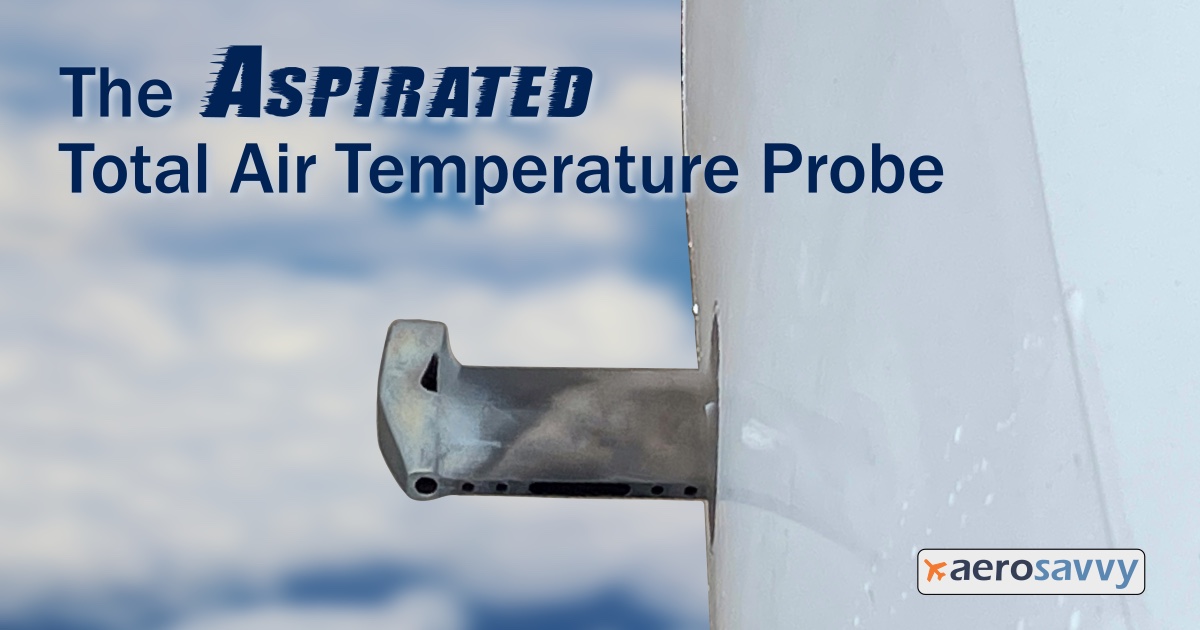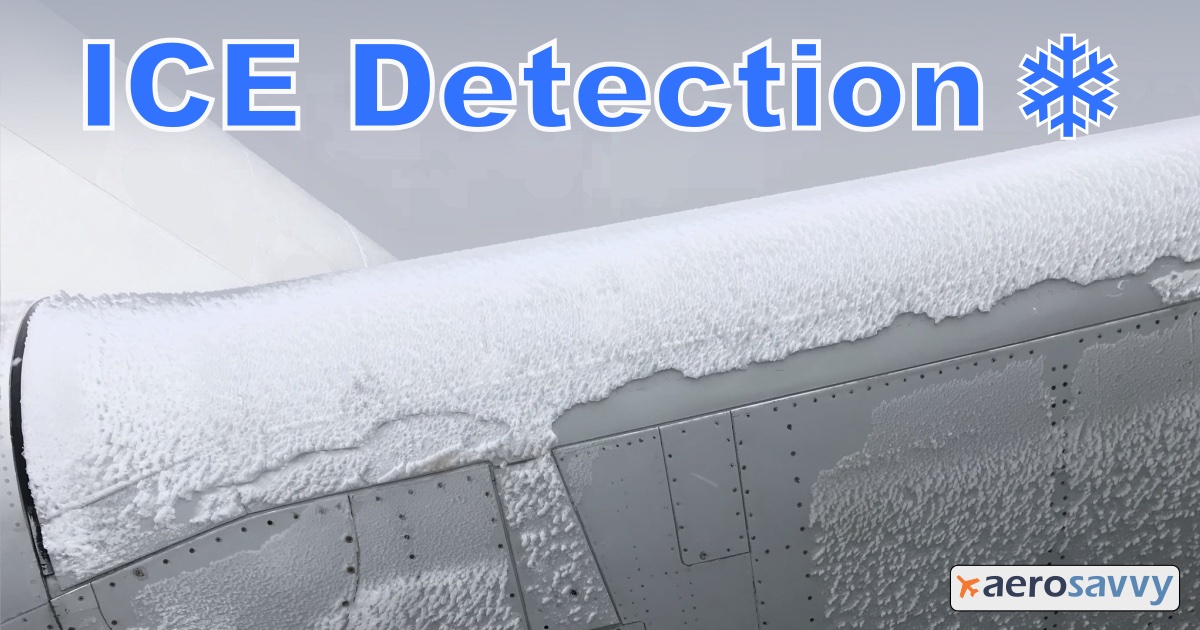
Large aircraft have a lot of probes for gathering data. One of my favorites on the 767 is the little guy that sits beneath the captain’s windscreen.

On humid days, the aspirated total air temperature (TAT) probe puts on quite a show; spitting and sputtering a long stream of high pressure condensation.
The probe is basically a thermometer. Why all the theatrics?
Where to Find the TAT Probe
TAT probe locations vary on different aircraft models. Some aircraft have one, others utilize multiple probes.
The 757 and 767 have a single probe (new production 767s have two TAT probes). The probe on the 767-300F(ER) is located below the captain’s windscreen. On a 757-200, the probe is on the right side of the fuselage a few feet aft of the nose gear.
TAT probes on some Airbus models are on the lower fuselage, aft of the radome.

What does the probe measure?
Air temperature, of course! There are a couple types of temperature that pilots (and aircraft) use.
- Static Air Temperature (SAT) – This is the temperature of the undisturbed air around the aircraft; also referred to as outside air temperature (OAT). When standing still outside, you feel the static air temperature.
- Total Air Temperature (TAT) – When flying fast, the temperature of the air hitting the aircraft rises significantly due to compression. Cruise TAT in a jet is typically 30°C (54°F) higher than the outside air temperature.
The TAT probe accurately measures Total Air Temperature. The ship’s air data computer derives the SAT from TAT probe data.
Compressed Air Can Be HOT!
The effects of air compression in flight can present significant engineering challenges. Supersonic airliner Concorde experienced total air temperatures (and skin temperatures) as high as 127°C (260°F) on the nose of the aircraft during Mach 2 flight.

The SR-71 Blackbird (everyone’s favorite spy plane) experienced skin temperatures of 315°C (600°F) at Mach 3. Designers used titanium for the aircraft skin to handle the extreme temperatures.
How is the temperature data used?
- Total air temperature is important when monitoring fuel temperatures on long flights (fuel tank temps tend to approach TAT).
- Pilots use both TAT and SAT to help determine when to use airframe and engine anti-ice systems. My airline’s 767 procedures require the use of engine anti-ice in visible moisture (rain, snow, clouds) between +10°C TAT and -40°C SAT.
- TAT probe data is used for calculating Mach number and true airspeed which are critical for cruise flight and navigation.
- Engine thrust setting values and auto throttles require data from the TAT probe.

Why is the TAT probe aspirated?
When an aircraft is parked or taxiing slowly, air near the probe can stagnate. Without fresh air moving past the sensor, the temperature measurement can be inaccurate.
Engineers solved the problem of air stagnation by creating a method to draw fresh air into the probe.

When an engine or auxiliary power unit is running, high pressure bleed air is fed into the bottom of the probe and out exhaust holes. The bleed air reduces air pressure inside the probe. The drop in pressure draws fresh air into the probe and past the temperature sensor. It’s a clever application of Bernoulli’s Principle.
If you’re standing near the nose of a 767, or even on a jet bridge entering the cabin, you can hear the bleed air rushing through the probe. It sounds like a high pressure air hose at a gas station.
Where To View SAT & TAT
On the 757 and 767 instrument panel, TAT is always available at the top of the center EICAS display. Pilots can access static air temperature on either FMC Control Display Unit.
In the pictures below, the aircraft was cruising at 35,000 feet. Speed was Mach .79. TAT was -13°C, and the SAT was -42°C. The air hitting the aircraft had a temperature rise of 29°C due to compression.

Condensation Show
Not only can the TAT bleed air be heard, it can often be seen. When the humidity is high, the moist air exhausting from the probe can shoot a condensation plume several feet.

Resources
Discover more from reviewer4you.com
Subscribe to get the latest posts to your email.






